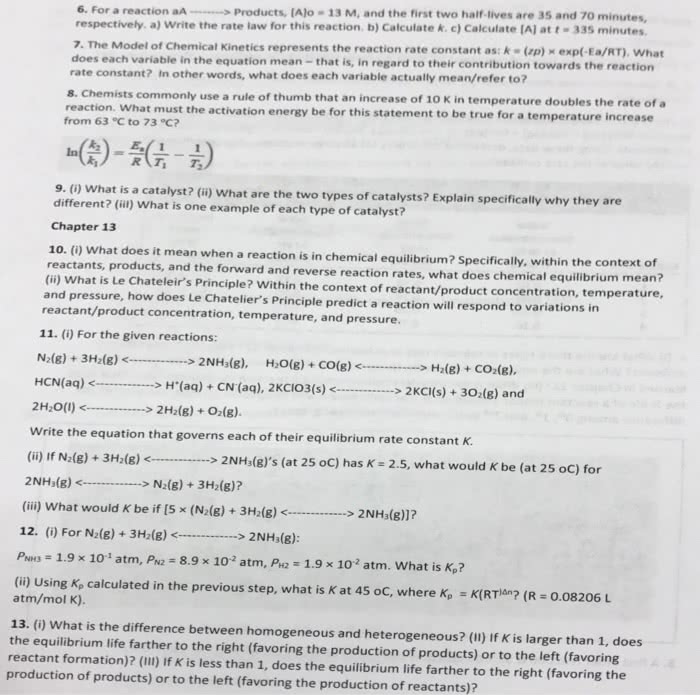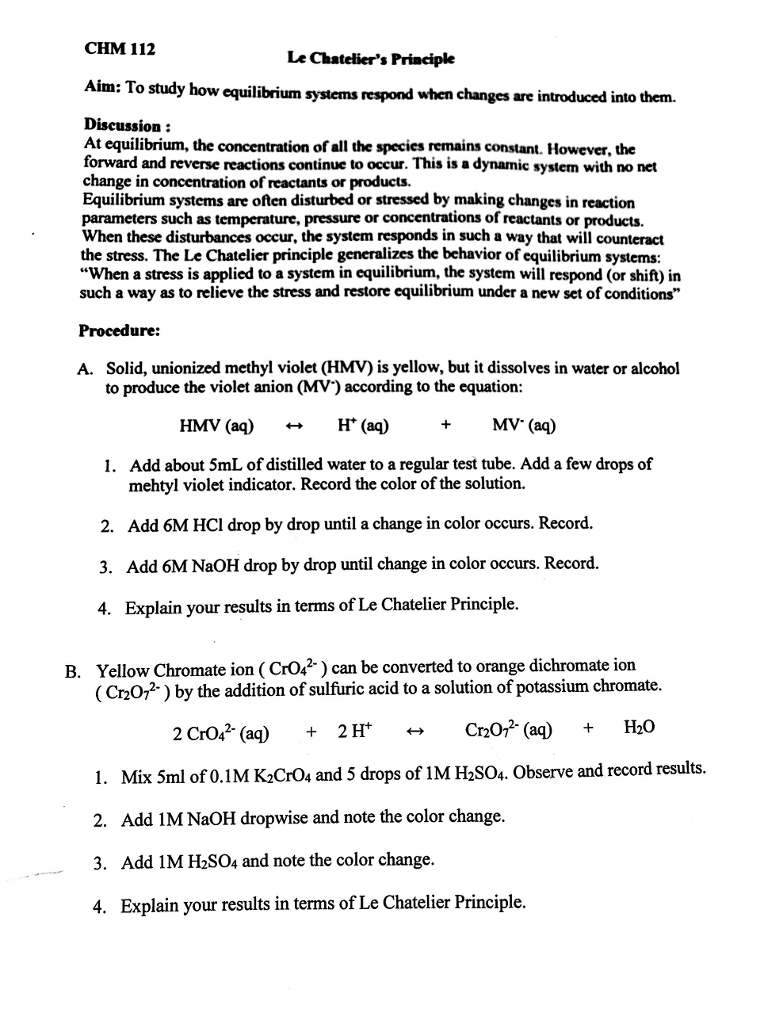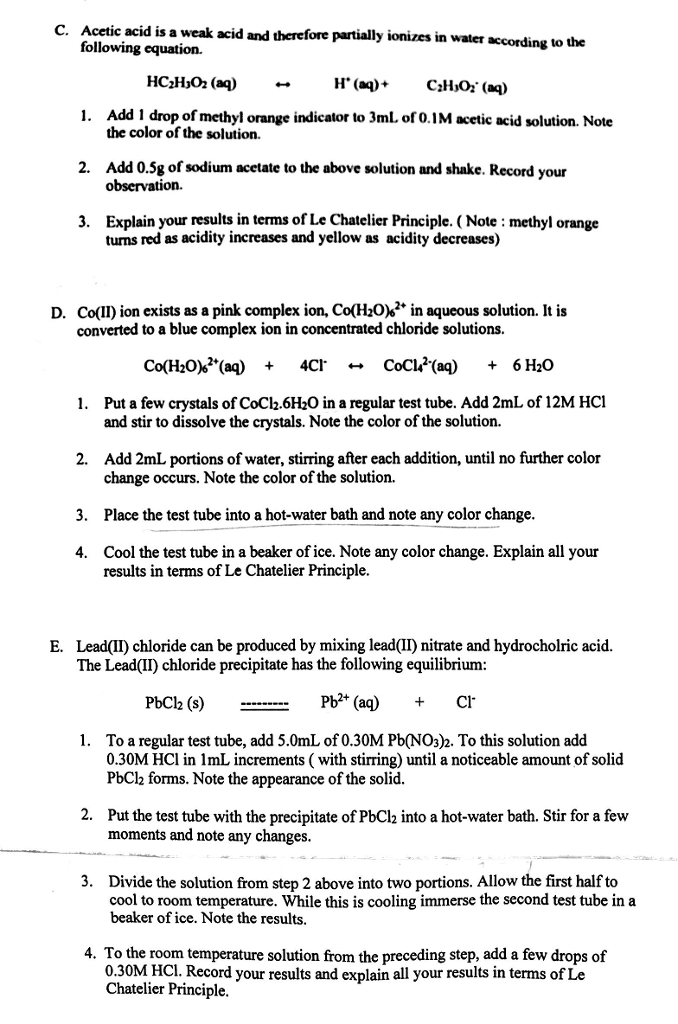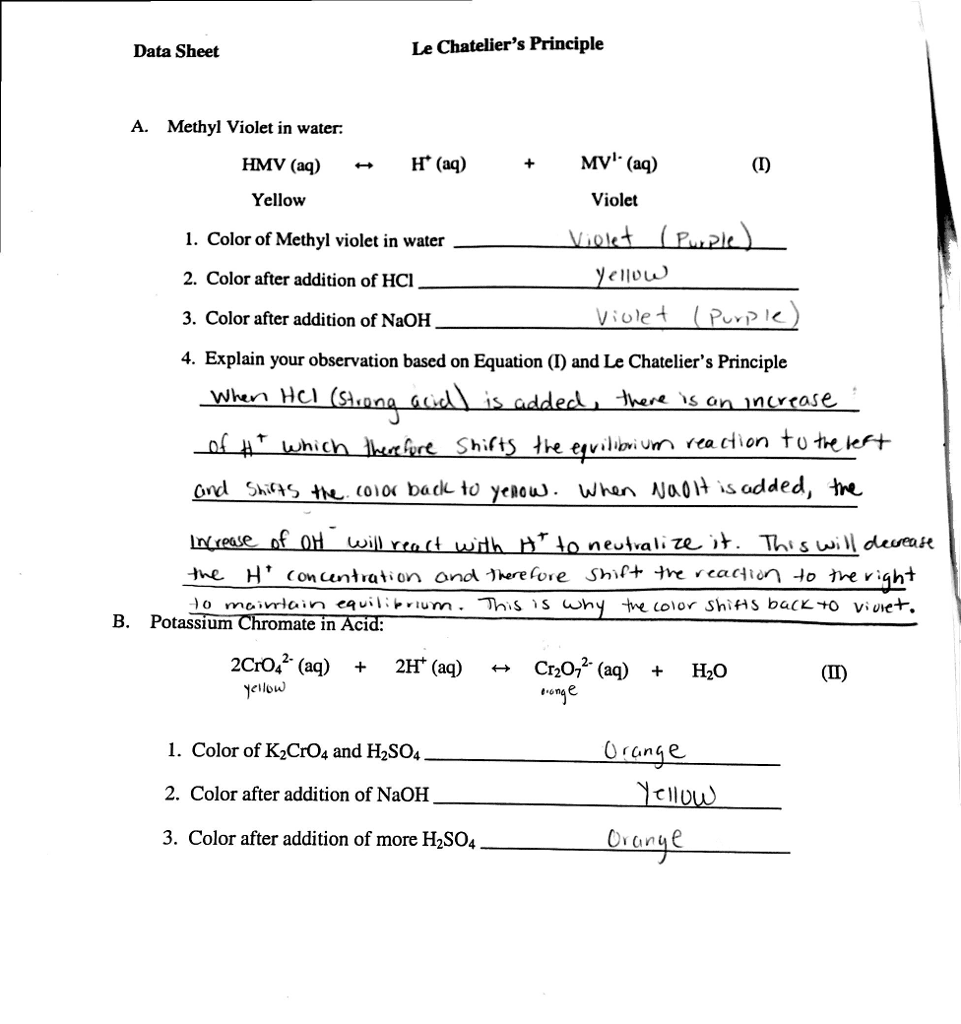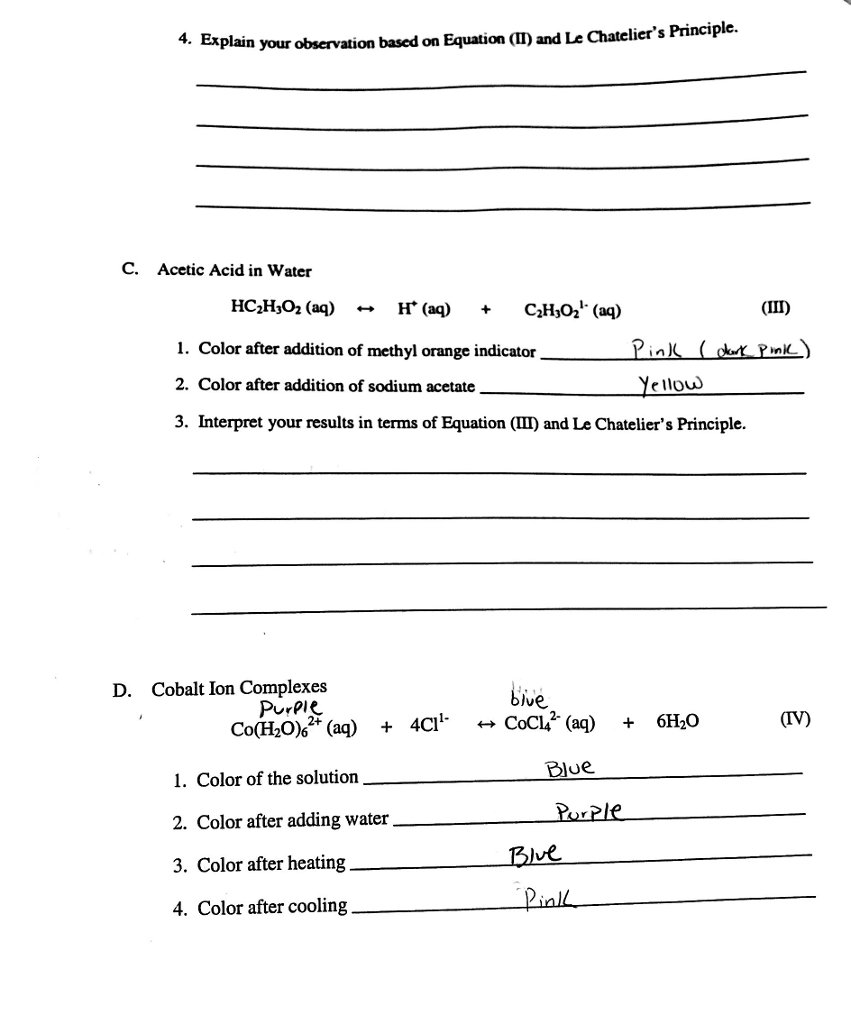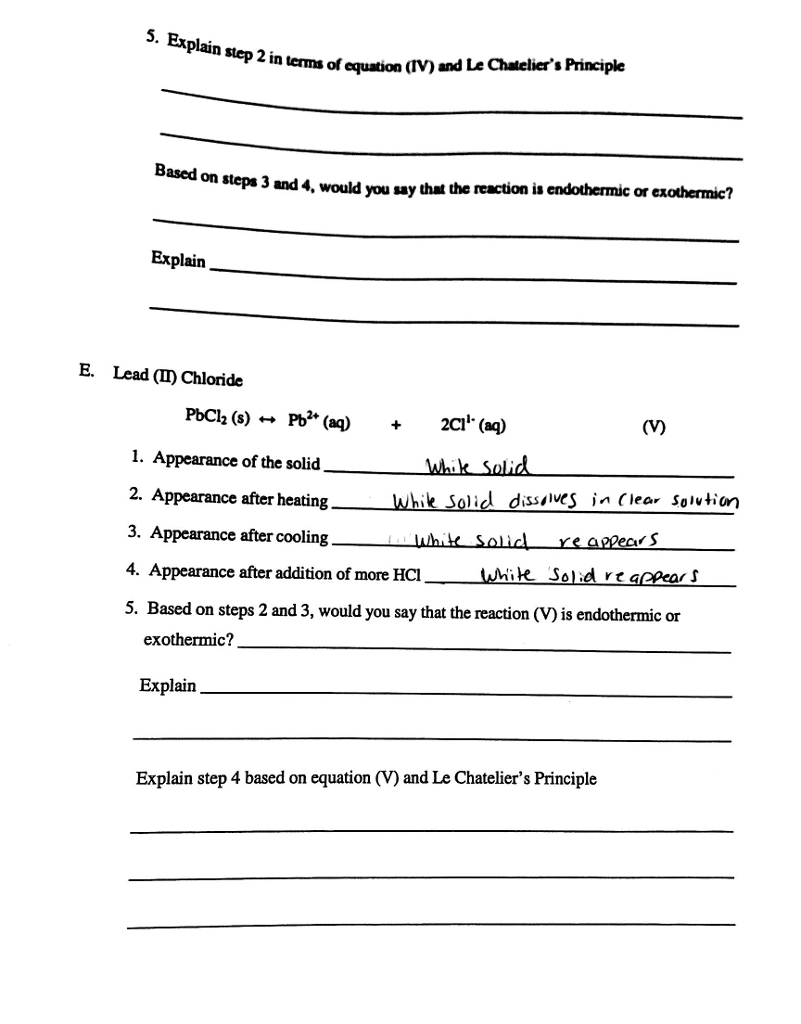CHY 102 Lecture Notes - Lecture 46: Dinitrogen Tetroxide, Dynamic Equilibrium, Phosphorus Pentachloride
Document Summary
Adding or removing a product or reactant to/from a system at equilibrium will disturb the equilibrium. Equilibrium shifts to reduce change in composition. P-v changes are counteracted by changing the number moles of gas-phase species in a reaction vessel. Will these equilibria shift towards reactants or products or no change when the volume of the reaction vessel is increased: i. products; ii. reactants; iii. no change, i. reactants; ii. products; iii. products. I. products; ii. products; iii. reactants reactants; ii. reactants; iii. Le ch telier"s prin(cid:272)iple is e(cid:454)plained (cid:271)(cid:455) q. The following reaction is at equilibrium in a rigid container: Which way will the equilibrium shift (towards reactants or towards products or no change) if: Energy can be thought of as a product or reactant. Stress: decrease temperature: reactants, products, no change. Stress: increase volume: reactants, products, no change. Stress: increase pressure by adding helium: reactants, products. Dynamic equilibrium is established when forward & reverse rates are equal.


